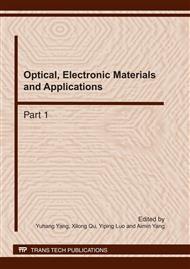p.728
p.732
p.738
p.742
p.747
p.752
p.757
p.763
p.768
A Novel Heuristic PageRank Algorithm in Web Search
Abstract:
With the booming development of the Internet, web search engines have become the most important Internet tools for retrieving information. PageRank computes the principal eigenvector of the matrix describing the hyperlinks in the web using the famous power method. Based on empirical distributions of Web page degrees, we derived analytically the probability distribution for the PageRank metric. We found out that it follows the familiar inverse polynomial law reported for Web page degrees.
Info:
Periodical:
Pages:
747-751
Citation:
Online since:
March 2011
Authors:
Keywords:
Price:
Сopyright:
© 2011 Trans Tech Publications Ltd. All Rights Reserved
Share:
Citation:


